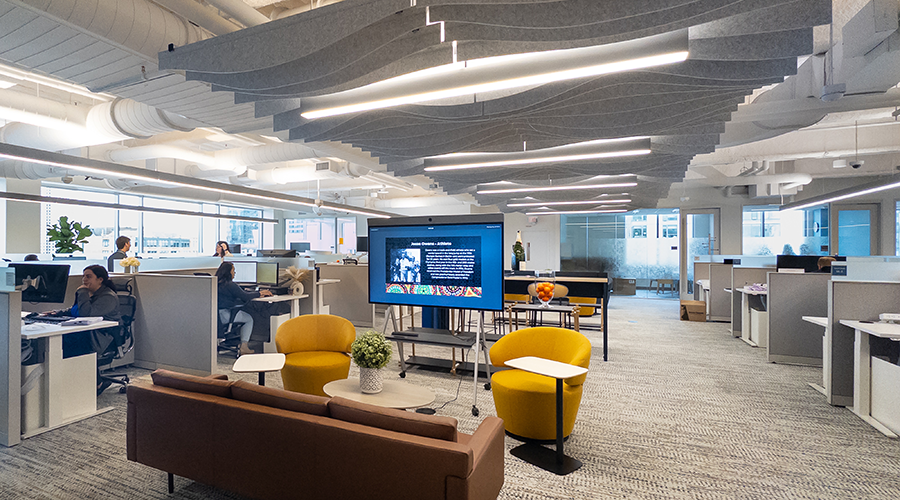 At the AECOM office in London, the central core and circulation space provide energy and diverse uses.Hufton + Crow
At the AECOM office in London, the central core and circulation space provide energy and diverse uses.Hufton + CrowWhat Workplaces Can Learn From College Campuses
To recruit the best young talent, FMs should take lessons from how collaboration space, technology, individual workstations are used on college campuses.
In a world where securing top talent is a competitive business advantage, employers invest significant resources to recruit and retain an exceptional workforce. Well over half of U.S. employers planned to hire recent college graduates in 2016, and this trend is likely to continue. But as companies look to recruit talent from college and university campuses, they are overlooking an effective recruitment strategy that is theirs for the taking — the campus design itself.
By incorporating campus design concepts into the workplace, companies may gain a stronger foothold in talent recruitment and employee retention. Campus design strategies also support evolving work styles and enhance productivity. In fact, recent research suggests that collegiate design is the new driver for workplace design, but few companies know how to implement these strategies. (See the INFOGRAPHIC “New-school hasn’t reached office design.")
Here is a look at what corporations can learn from college campuses, how to implement new design strategies at work, and why those spaces are important for attracting and retaining recent college graduates.
Lost in transition
When making the jump from collegiate to corporate environments, recently hired graduates are often “lost in transition.” New hires are baffled, not only about the relevance of their physical space (“cube farms”), but also by the work styles expected of them.
As one first-year analyst at a top communications company commented to researchers studying this phenomenon, “The thing that keeps me up at night is going to sit in my cubicle farm on Monday morning.” Another recent college graduate and new hire observed, “Professors give me assignments and deadlines. How I complete those tasks is entirely up to me. They don’t say, ‘You will write this paper between 9 a.m. and 5 p.m. while sitting at this assigned library table.’”
These comments are not surprising, considering the stark differences that one observes between the collegiate and corporate environments. On college campuses:
• Students work everywhere. Their workplace includes park benches, soft seating, stairwells, hallways, wide-open areas, noisy environments, and quiet places.
• College is a 24/7 blend of work and social interaction. Work life and social life occur simultaneously and shift easily and instantly.
• Technology is an integral and seamless part of students’ work styles. The typical college student uses multiple digital devices, often simultaneously — including an active desktop, a laptop, a tablet displaying content, and a smart phone for music and texting — both for personal and academic purposes.
• Central building and core spaces are the primary collaboration, communication, and interaction spaces in college buildings. Lobbies, circulation spaces, and corridors all support student work styles. They are not merely conveyances between individual workspaces.
• Campus collaborative spaces are highly used by groups of students. Students clearly differentiate group work from team work. In group work, students engage in individual goal-oriented study or assignments while co-locating with a group — whether a small group in a lounge or a large group in a classroom — sporadically collaborating or otherwise interacting. In team work, two or more students work together for a common outcome.
As companies begin to recognize the need for and the value and benefits of accommodating the work styles of the newest generation of employees, few know how to take the next steps: learning from collegiate design strategies and applying them in the workplace.
Related Topics:














